Apple IIGS -A Colorful Apple Always Tastes Better!

Produced from 1986 to 1992, the Apple IIGS (Graphics & Sound) was Apple’s first true multimedia computer. Featuring vastly improved graphics and sound over earlier Apple II models, the IIGS bridged the gap between the classic Apple II line and the emerging Macintosh systems. Designed with input from Steve Wozniak, the IIGS maintained full compatibility with its predecessors through the custom Mega II chip, while offering a modern 16-bit architecture.
- Launched at $999 (around $2,640 today), the Apple IIGS sold approximately 1 million units
- The first 50,000 units proudly featured Wozniak’s printed signature on the case — affectionately known as the “Woz Edition”
![]() THE APPLE IIGS AT A GLANCE
THE APPLE IIGS AT A GLANCE
- Operating System: GS/OS with GUI (early versions used ProDOS 16)
- CPU: 16-bit WDC 65C816 at 2.8 MHz
- Memory: 256 KB base RAM (later 1 MB), expandable to 8 MB
- ROM: 128 KB (256 KB in later models)
- Graphics: 12-bit color palette (4,096 colors)
- Sound: Ensoniq 5503 wavetable synthesizer (32-channel stereo)
- Compatibility: Full Apple II emulation via Mega II chip
- Connectivity: Apple Desktop Bus (ADB), RGB video out, joystick, serial, and floppy ports
- Expandability: 7 Apple II slots, memory upgrades, hard disk support, accelerator cards
- Software: Supported hundreds of applications and over 300 games
 Operating System & Interface
Operating System & Interface
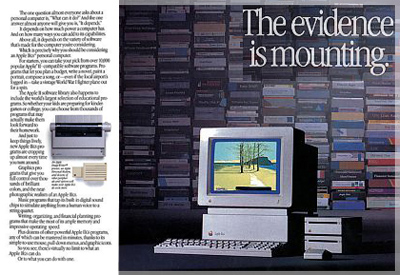
The IIGS introduced a modern mouse-driven GUI reminiscent of early Macintosh systems. Key OS highlights include:
- ProDOS 16 in early models; later replaced by GS/OS, a true 16-bit system
- ROM/Disk Hybrid OS loading
- Features Finder for navigation
- Desk Accessories allowed limited multitasking
- Advanced multitasking was later offered by GNO/ME, a UNIX-like third-party kernel
- Up to 95% software compatibility with earlier Apple II programs
 Colors & Graphic Modes
Colors & Graphic Modes
With the Super-High-Resolution (SHR) mode, the IIGS offered industry-leading color depth for its time:
- 4,096-color palette
- Up to 256 on-screen colors standard, and thousands via special modes
- Fully supports all legacy Apple II video modes
□ Super-High-Resolution (320 Mode)
- 320x200 (16 colors / 4,096 color palette)
- 320x200 (256 colors / 4,096 color palette)
- 320x200 (3,200 colors / 4,096 color palette)
□ Super-High-Resolution (640 Mode)
- 640x200 (4 colors / 4,096 color palette)
- 640x200 (16 colors / 4,096 color palette)
- 640x200 (64 colors / 4,096 color palette)
- 640x200 (800 colors / 4,096 color palette)
![]() Sound Capabilities
Sound Capabilities
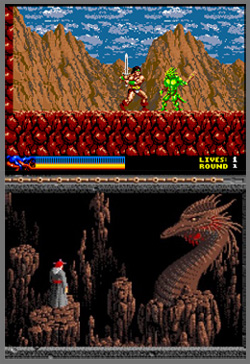
At its heart, the IIGS features the Ensoniq 5503 Digital Oscillator Chip, developed by Bob Yannes (creator of the SID chip for the Commodore 64):
- 8-bit audio, up to 32 independent channels
- 15 stereo voices standard
- 64 KB of dedicated DOC-RAM
- Supports up to 8 stereo speaker channels
- A leap ahead of anything Apple had previously offered in sound
 I/O Ports & Connectivity
I/O Ports & Connectivity
- 2 × Serial ports (Mini-DIN8) for modems, printers, and networking
- Apple Desktop Bus (ADB) for mouse and keyboard
- RGB (DA-15) and composite video output
- 1/8" audio jack (headphone)
- Joystick port (DE-9)
- Floppy port (D-19)
- Real-time clock with battery backup
 Expansions & Upgrades
Expansions & Upgrades
- RAM: Up to 8 MB via 44-pin memory expansion
- Expansion Slots: 7 Apple II slots (compatible with II/II+/IIe cards)
- Storage: External 3.5"/5.25" drives, SCSI cards, IDE/CF adapters
- Accelerators: TransWarp GS, Zip GSX
- IBM-PC Compatibility: PC Transporter add-on (XT-class emulation)
- Other: Video cards, network adapters, sound expansions
 Hardware Revisions
Hardware Revisions
-
ROM 0 – Original 1986 model
-
ROM 01 – 1987 revision with improved firmware
-
ROM 3 – 1989 model with 1 MB built-in RAM and enhanced audio
-
ROM 4 – Planned but never released
Sources:
![]() > FIND MORE
> FIND MORE
□ MODELS
» Apple Lisa
» Apple II GS
» Apple Mac
» Color Classic
» Macintosh LC
» iMac G3








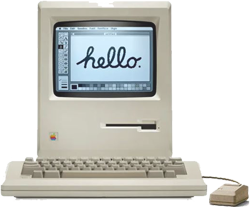
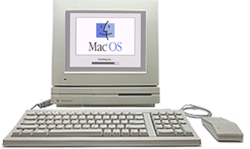
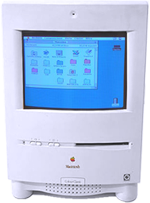


 TOP-10 APPS
TOP-10 APPS TOP-20 GAMES
TOP-20 GAMES
